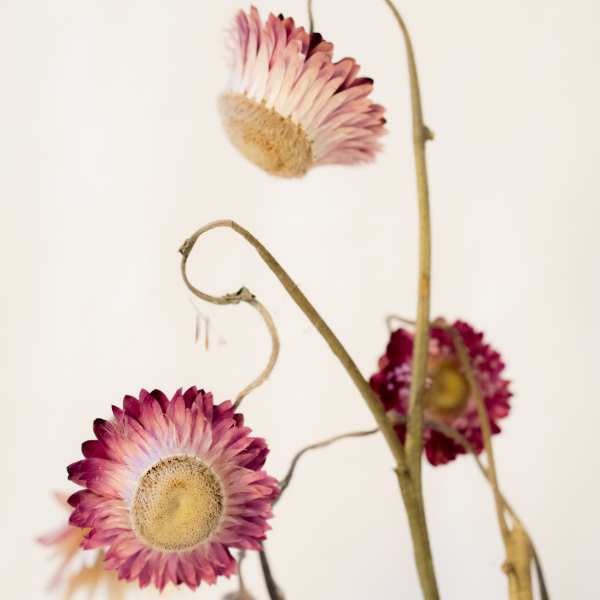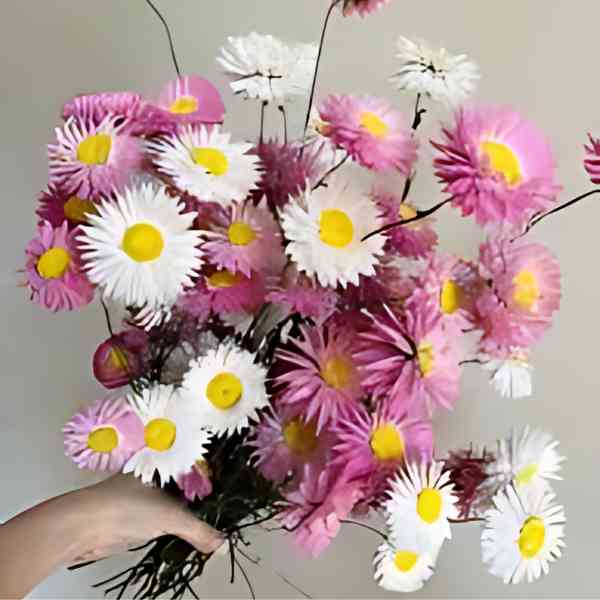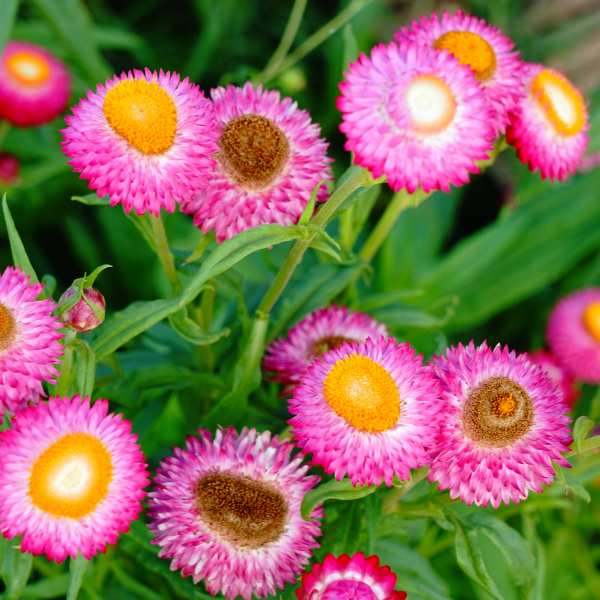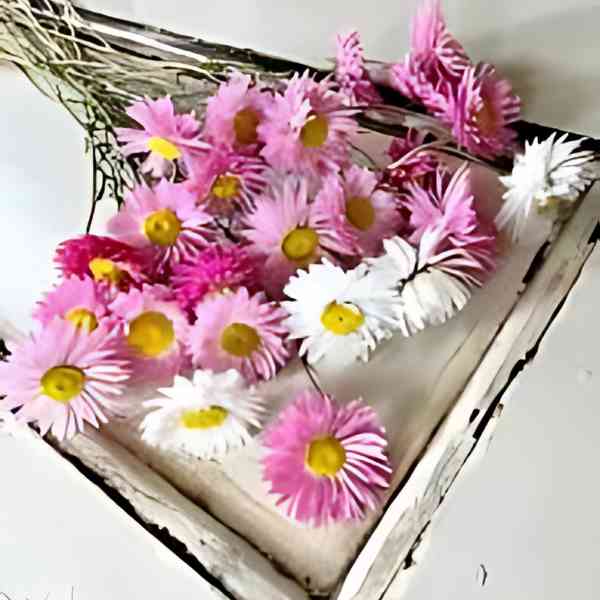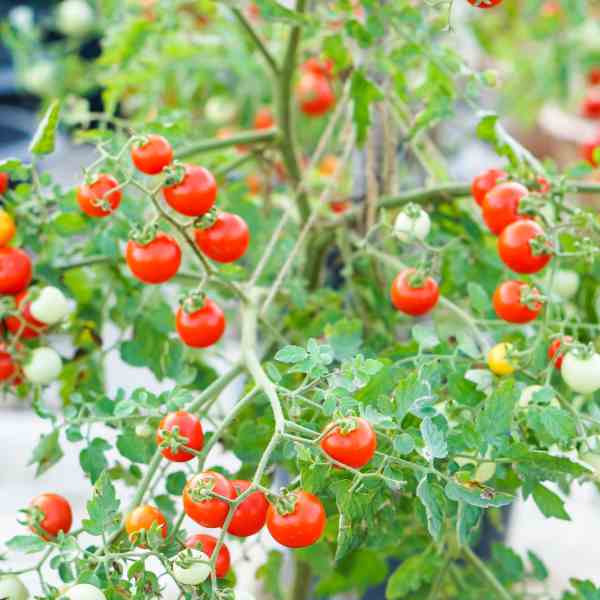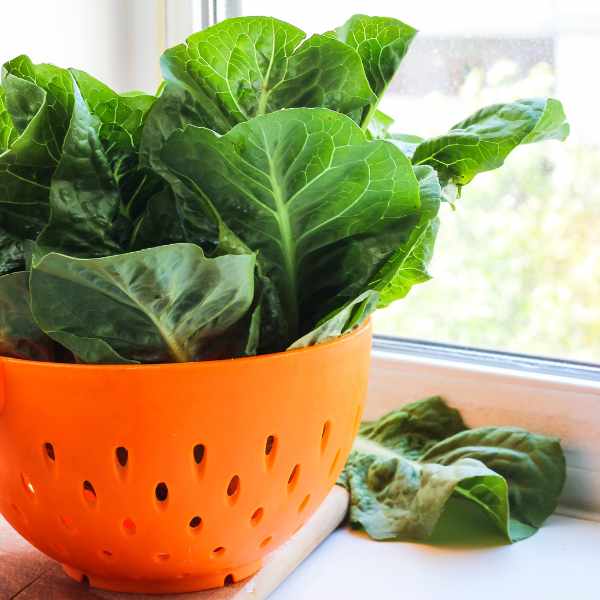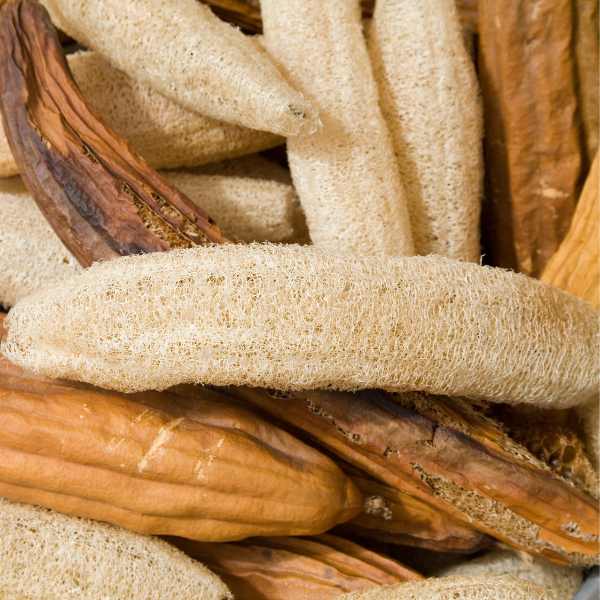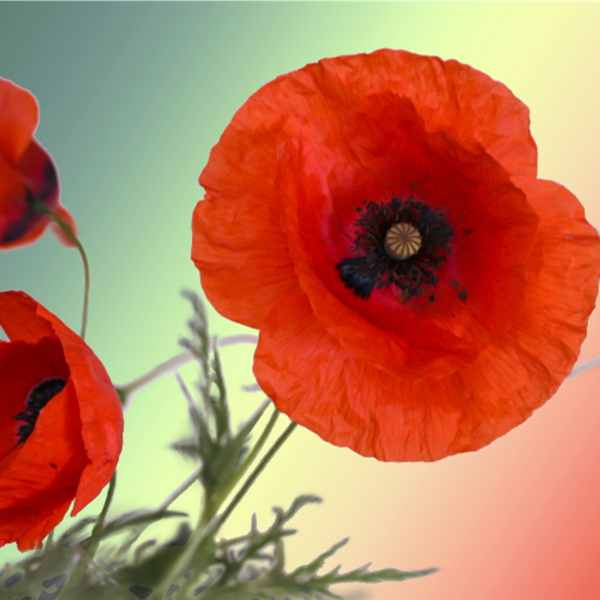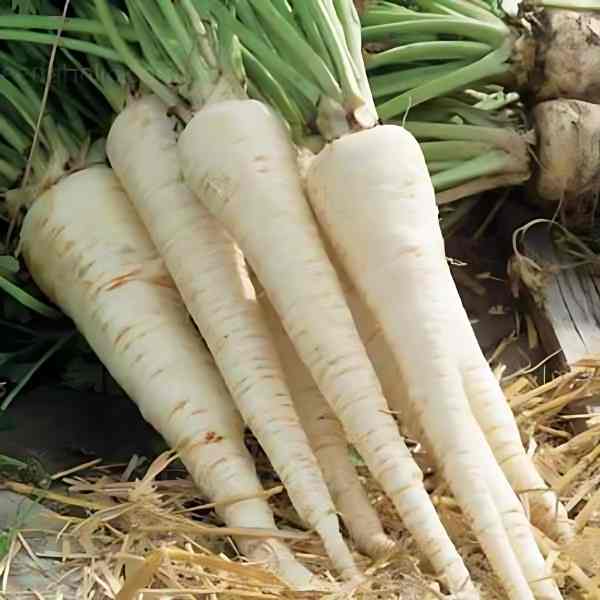Paper Daisies. The Perfect Decoration
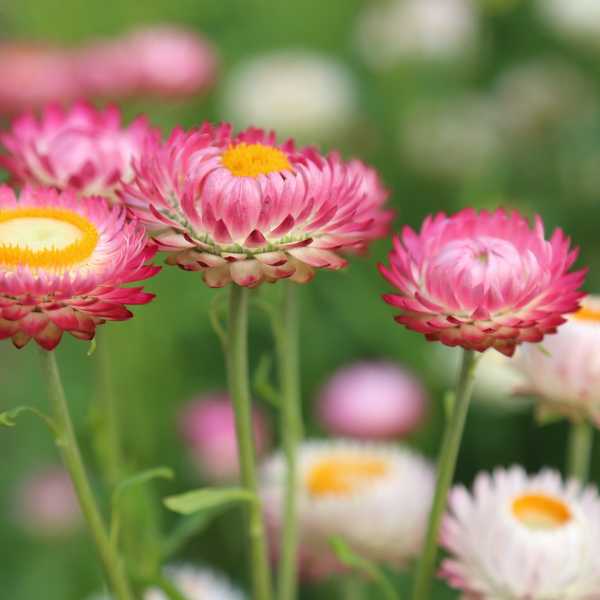
In the world of Australia’s native flora, few plants capture the essence of beauty and adaptability as vividly as the Paper Daisy. Also known as Strawflowers, or Everlastings, they have long been celebrated for their vibrant hues, tenacity, and versatility. From sunbaked outback soils to urban balcony gardens, Everlasting Daisies thrive with a quiet determination.
Survival Instincts
Native to the arid and semi-arid regions of southern Western Australia and South Australia, Paper Daisies are evolutionary masterpieces. Their papery bracts, often mistaken for petals, are a brilliant adaptation to Australia’s harsh climate.
Unlike delicate petals that wilt under the relentless sun, these stiff, straw-like structures retain their colour and form long after flowering, a trait that ensures the plant’s survival in nutrient poor soils and erratic rainfall. This resilience has allowed them to colonise diverse habitats, from coastal dunes to inland clay plains.
Their nectar-rich centers attract pollinators such as bees, butterflies, and native beetles, fostering biodiversity. In urban settings, they serve as miniature oases for insects, bridging the gap between human landscapes and wild habitats. The Paper Daisies ability to self-seed prolifically ensures their survival, creating drifts of colour that transform barren patches into wildflower meadows. Tourists flock from far and wide to see the displays that they put on each spring in Western Australia’s rural regions.
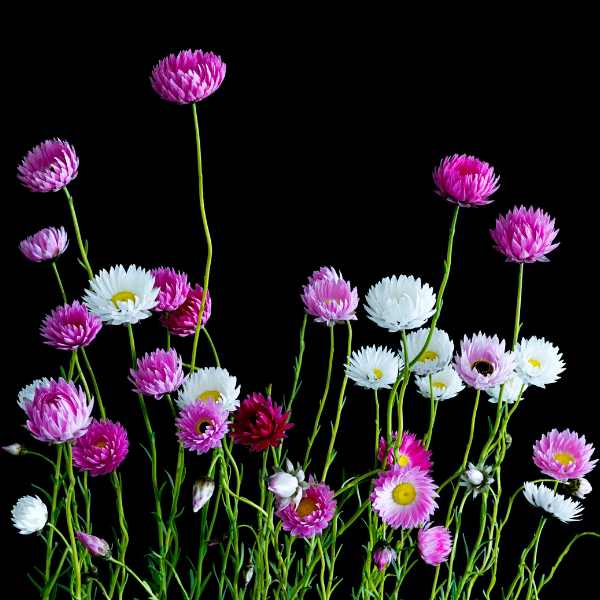
Planting Ideas: From Nature Strips to Balconies
- Verge Gardens: Transform your nature strip into a pollinator paradise. Paper Daisies handle foot traffic, poor soil, blazing sun and occasional rogue soccer ball. Pair the with native grasses like Lomandra for a low maintenance, drought proof display that will turn your verge into a neighbourhood show stopper.
- Balcony Brilliance: No yard? No drama! Grab a few terracotta pots, they are great for drainage, fill it with native potting mix and create a mini meadow. A bright pot of Everlastings by your front door says ‘Welcome’ better than any doormat.
- Meadow Magic: Scatter seeds in open garden bed for a wild flower vibe. They will mingle beautifully with Kangaroo Paws or Billy Buttons for an Aussie Native bouquet.
- On the move: An old wheel barrow makes funky alternative to a pot, you just have to drill a few drainage holes and you have a moveable meadow to decorate your garden and entertaining areas with.
- An actual full size meadow will require a lot of seed if you want to get an instant full effect but you could start in the middle or choose a corner in the first year and wait for them to self seed to fill in the gaps. This method is a lot easier on the wallet.
Sowing Seeds: From Scatter to Splendour
Cultivating Paper Daisies is an exercise in simplicity, making them ideal for both novice gardeners and time-strapped enthusiasts. They demand little but repay generously, flourishing in conditions that would challenge less hardy species.
When to Sow:
- Temperate and warm climates: the end of Autumn.
- Seeds germinate over winter for spring blooms.
- Cooler climates: Early Spring, August to September.
How to Sow:
- Direct sowing: Rake soil to a fine tilth, scatter seeds, and press them gently into the ground (no burying—they need light to germinate).
- Seed-raising hack: Mix seeds with damp sand in a bucket to weigh them down. Prevents wind theft.
- Punnets: Fill with native mix, sprinkle seeds, and mist daily.
- Transplant when seedlings have 4–6 leaves.
- Dig the hole twice as wide as the seedling pot and the same depth.
- Gently remove it from the seedling from the pot, tease the roots and plant into the hole.
- Backfill around the plant and water in well.
Germination:
- 7–21 days. Keep soil moist but not soggy—a spray bottle is your best friend here.
Transplanting Tips:
- Space plants 30 cm apart.
- Water seedlings with a seaweed tonic to reduce transplant shock.
Soil and Sunlight
These daisies are very broad in their soil preferences, tolerating everything from sandy loam to heavy clays. However, they reach their full potential in well-drained, slightly acidic soils. Gardeners working with dense clay can improve the outcome by adding sand or compost to enhance drainage and root development.
A sun-loving species, they require at least six hours of direct sunlight daily, though in regions with scorching summers, dappled afternoon shade prevents stress.
Watering and Feeding
Once established, they thrive on minimal watering, preferring deep, infrequent soaks to frequent sprinklings. Nutritionally undemanding, an annual application of low-phosphorus, native-specific fertilizer in late winter suffices. Sandy soils, with their nutrient leaching tendencies, benefit from a mid-summer top-up, ensuring continuous blooms.

How to Harvest
Timing is everything: Pick on a sunny afternoon when blooms are fully open and dew-free. Snip smart: Use sharp secateurs to cut stems at the base. Longer stems = more arranging options later.
Bundle with Care: Small bunches = better airflow: Group 5–7 stems, tie with jute twine (avoid synthetic strings—they slip), and label with harvest dates.
Dry in the Dark: Location matters, hang bundles upside-down in a dark, dry cupboard, shed, or attic. Avoid humid spots like bathrooms, mould is not your friend. In damp climates, add a fan or dehumidifier to speed up the process. Silica gel packets can help too (pop them in a sealed box with blooms).
Creative Endeavours
Beyond their horticultural appeal, Paper Daisies hold a unique place in craft and culture. Their enduring beauty when dried has made them staples in floral artistry, offering sustainable alternatives to synthetic decor.
From festive garlands to pressed botanical art, the applications are boundless. Crafters weave dried Paper Daisies into Christmas tinsel, wedding confetti, or framed arrangements, each project celebrating their natural elegance. In an era increasingly conscious of environmental impact, these flowers offer a guilt-free medium for creativity, blending aesthetics with eco-consciousness.
Challenges and Solutions
No plant is without vulnerabilities, yet Everlasting Daisies face few adversaries. Aphids may occasionally besiege tender shoots, but a spray of diluted pyrethrum or the introduction of ladybirds easily mitigates infestations.
Slugs and snails, deterred by barriers of crushed eggshells, diatomaceous earth, or beer traps rarely pose significant threats.
Fungal issues, often a result of overwatering or poor airflow, are preventable through mindful spacing and avoiding overhead irrigation.
FAQs
Q: Why aren’t my daisies flowering?
A: Likely not enough sun or overfeeding. Stick to low-phosphorus fertilisers!
Q: Can I grow them indoors?
A: They crave full sun, but a south-facing window might work. Expect fewer blooms.
Q: Are they toxic to pets?
A: Nope! Pet-safe and pollinator-friendly.
Final Thoughts
Paper Daisies are the ultimate “give-it-a-go” plant. They’ll thrive in your worst soil, forgive your watering slip-ups, and still gift you months of joy. Plus, their dried blooms mean you can enjoy their magic year-round., particularly on tender young shoots – spray any infestations with a Pyrethrum based spray as needed. Snails and Slugs also enjoy feasting on the young seedlings, so set beer traps (shallow saucers filled with beer) around young seedlings.
SHOP PAPER DAISIES Plant Profile | Everlasting Daisies | ABC Australia

